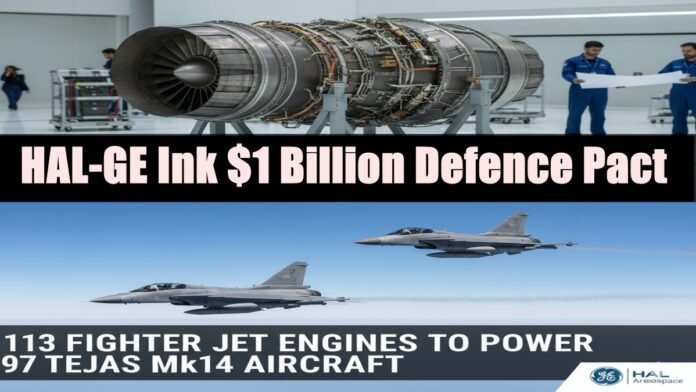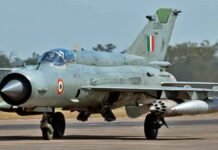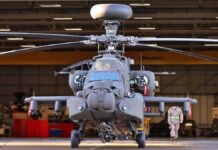
Key Points
- HAL signs $1 billion agreement with GE for 113 F404-GE-IN20 engines on November 7, 2025
- Engines will power 97 additional Tejas Mk1A jets ordered in September 2025 worth ₹62,370 crore
- Engine deliveries scheduled between 2027-2032, ensuring continuity in aircraft production
- Total F404 engines ordered now reaches 212 units for entire LCA Mk1A programme
- HAL’s indigenous content in Mk1A exceeds 64% with advanced UTTAM radar and electronic warfare systems
New Delhi: The agreement signed between HAL and General Electric Company represents the second major engine supply contract for the LCA Tejas Mk1A programme. HAL confirmed through official announcements that the F404-GE-IN20 engines and associated support packages will ensure the timely execution of the 97-aircraft order, with deliveries commencing in 2027 and continuing through 2032.
This timeline aligns perfectly with HAL’s production schedule for the Tejas Mk1A fleet, avoiding potential delays that could hamper the Indian Air Force’s modernization plans. The deal ensures HAL receives its complete requirement of 212 GE-404 engines in continuity, eliminating supply chain uncertainties that have plagued previous defence procurement programmes.
Building on Previous Defence Orders
The September 2025 contract for 97 Tejas Mk1A aircraft, valued at ₹62,370 crore, represents the Ministry of Defence’s second mega order for the indigenous fighter programme. This comprises 68 single-seat variants and 29 twin-seat trainers specifically designed for the Indian Air Force’s operational requirements.
The initial contract signed in February 2021 was worth ₹48,000 crore for 83 Tejas Mk1A jets, supported by a separate $716 million deal with GE for 99 F404-IN20 engines. Deliveries under that earlier agreement began in 2025 after pandemic-related delays, with only 4 engines received so far out of the contracted 99 units. Currently, HAL has constructed 10 aircraft awaiting final certification, including weapon firing tests, before deliveries can commence.
With both contracts combined, the Indian Air Force will ultimately receive 180 Tejas Mk1A fighter jets, significantly bolstering its combat capabilities as older-generation aircraft are phased out.
Total Engine Procurement Reaches 212 Units
The latest agreement for 113 engines brings HAL’s total F404-GE-IN20 engine procurement to 212 units. This includes the 99 engines ordered in 2021 for the first batch of 83 aircraft, plus the current order of 113 engines supporting 97 aircraft. The additional 32 engines beyond the base requirement will serve critical testing, development, and operational reserve purposes, ensuring programme continuity.
This comprehensive engine supply strategy eliminates previous concerns about sporadic deliveries and supply chain bottlenecks that could disrupt production schedules at HAL’s manufacturing facilities.
HAL’s Strong Stock Market Performance
Hindustan Aeronautics Limited shares have demonstrated robust performance, gaining 11.07 percent year-to-date as investors respond positively to the steady stream of defence orders flowing to the company. Market analysts view HAL as a primary beneficiary of India’s expanding defence modernization budget and the government’s emphasis on indigenous manufacturing.
The company is scheduled to announce its Q2FY26 financial results on November 12, 2025. Investors are watching closely, anticipating strong revenue growth driven by the substantial order book now totaling over ₹1.10 lakh crore when combining both Tejas contracts. The continuous inflow of government orders has transformed HAL into one of India’s most valuable defence public sector undertakings.
Advanced Capabilities of Tejas Mk1A
The Tejas Mk1A represents a significant technological leap for the Indian Air Force, classified as a 4.5-generation multi-role combat aircraft capable of executing diverse air superiority, ground attack, and reconnaissance missions with exceptional effectiveness.
Advanced Avionics and Radar Systems: The Mk1A features the indigenously developed UTTAM Active Electronically Scanned Array (AESA) radar system, capable of detecting, tracking, and engaging targets at ranges between 150-160 kilometers. This cutting-edge radar provides superior situational awareness and multi-target engagement capabilities compared to previous-generation mechanically-steered systems.
Electronic Warfare Suite: The aircraft incorporates the Swayam Raksha Kavach electronic warfare suite, an Indian-designed system providing comprehensive threat detection, jamming, and countermeasure capabilities against enemy radars and missiles.
Payload and Performance: The Tejas Mk1A can carry up to 3,500 kilograms of precision-guided munitions, air-to-air missiles, bombs, and external fuel tanks across nine hardpoints. Its maximum speed exceeds 2,000 kilometers per hour (approximately Mach 1.6), allowing rapid response and interception capabilities.
Indigenous Content: More than 64 percent of the Mk1A’s components are manufactured domestically, including critical systems like actuators, mission computers, composite structures, and weapons integration software. This substantial indigenous content reduces foreign dependency, supports India’s aerospace ecosystem, and generates employment across hundreds of supplier companies.
Proven Reliability of F404-GE-IN20 Engine
The F404-GE-IN20 engine selected for the Tejas Mk1A programme has established a strong track record in international combat aviation. HAL Chairman DK Sunil has described it as “wonderful and proven to be reliable,” highlighting its consistent performance across various operational environments.
Key advantages include a high thrust-to-weight ratio, ensuring excellent acceleration and maneuverability, low maintenance requirements, reducing lifecycle costs, and proven compatibility with multiple combat systems used globally. The engine’s reliability reduces operational downtime and enhances aircraft availability rates for the Indian Air Force.
Future Technology Collaboration: F414 Engines
While the current agreement addresses immediate requirements for the Mk1A programme, HAL and GE are simultaneously engaged in advanced negotiations for joint production of the more powerful F414 engine in India. This collaboration involves approximately 80 percent technology transfer, representing a quantum leap in India’s aerospace manufacturing capabilities.
The F414 engines will power two critical future platforms: the upcoming LCA Mk2, a larger and more capable variant of the Tejas with enhanced range, payload, and systems; and the fifth-generation Advanced Medium Combat Aircraft (AMCA), India’s stealth fighter programme expected to enter service in the 2030s.
This planned technology transfer and joint manufacturing arrangement will position India among the elite group of nations possessing an indigenous capability to produce advanced turbofan engines for combat aircraft, addressing a critical technological gap that has historically necessitated imports.
Strategic Context: Post-Operation Sindoor Defence Modernization
The HAL-GE agreement comes amid India’s intensified focus on defence modernization following recent security challenges. The government is making substantial investments across all military domains, with the indigenous defence manufacturing sector receiving particular emphasis under the ‘Aatmanirbhar Bharat’ vision.
This strategic approach aims to reduce dependence on foreign suppliers while building domestic technological capabilities, generating employment, and ensuring rapid availability of weapons systems during security contingencies. The Tejas programme exemplifies this philosophy, combining foreign engine technology with increasingly indigenous airframe, avionics, and weapons systems.
Implications for Indian Air Force Modernization
The assured supply of 212 F404 engines guarantees HAL can maintain production momentum for the next seven years, systematically replacing aging MiG-21 and MiG-27 squadrons with modern Tejas Mk1A fighters. This fleet modernization enhances the IAF’s combat effectiveness while reducing maintenance burdens and operational costs associated with Soviet-era platforms.
HAL expects to deliver at least 6 Tejas aircraft during 2026, with production rates accelerating as supply chains stabilize and certification processes are completed. By 2032, the Indian Air Force will operate a substantial fleet of indigenously-manufactured 4.5-generation fighters, representing a transformation in India’s combat aviation capabilities and industrial self-reliance.




















































